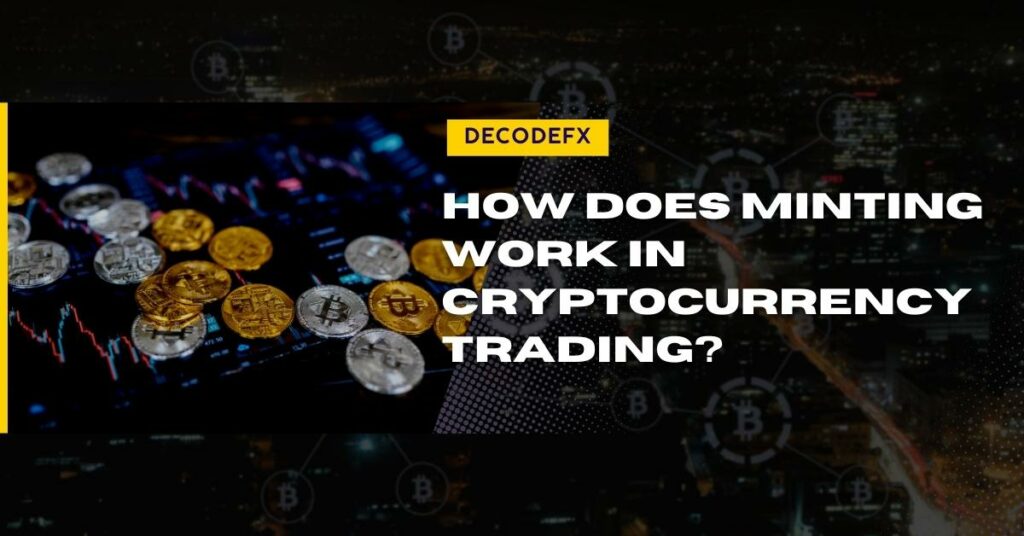When it comes to crypto, you will often hear the word ‘minting’ since it is closely tied to the entire process and transactions. Newly minted cryptocurrencies are added in circulation, and these are what people trade in the crypto market. In simpler terms, crypto minting is the process wherein new coins are generated using new data.
Here is everything you need to know about minting in cryptocurrency.
What Does Minting Tokens in Crypto Mean?
Basically, minting crypto is when new tokens are created using pre-existing and owned tokens on the same network it will be built on in accordance with PoS mechanisms. Pos, also known as Proof of Staking, is a crypto consensus mechanism for transactions and creating new blocks on the blockchain.
By doing crypto minting, the developers can add new coins through staking. It is a decentralized process which means that anyone who takes more than enough assets on a network can create new tokens without needing authorization in terms of regulation. You can mint both crypto and non-fungible tokens (NFT). The process of minting new crypto coins and token minting (NFTs) is also different.
Are Minting Tokens and Coins in Crypto Different?
You can actually mint both crypto coins and tokens but minting a token is much easier since you don’t need to create from scratch, unlike for crypto coins. Minting a token does not require extensive and expert-level mastery in coding. Fixed supply in crypto tokens means that it can all be minted in one go by using a smart contract. The only downside is that you won’t have complete control over all aspects of the token.
Is Minting The Same as Mining?
While both mining and minting are important parts of the crypto circulation process, the two serve different purposes. You must know these differences so you won’t have difficulty understanding more complicated crypto terms in the future.
Here are some of the major differences between crypto minting vs. mining:
Proof of Stake
Proof of stake is the method that is associated with minted meaning. This blockchain consensus mechanism is used to validate crypto transactions, and it is done through staking. Staking means that owners will be pledging pre-existing coins to validate the transactions.
The coins are locked up while the owners put them up for staking and trading. A random group of stakeholders will then verify the transactions on the blockchain. The PoS greatly reduces the computational work to make the cryptocurrency more secure. Users doing the proof of stake are also called Forgers, and the larger stakes they own, the more chances of them being selected to validate and record transactions on the blockchains.
Proof of Work
Proof of work is used in crypto mining, and it is the process of generating cryptocurrency by solving cryptographic equations using powerful computer processors. The verifying and validating of data will then be stored as a transaction on the blockchain. Encryption techniques are used to secure the transactions. Miners will then be rewarded with crypto coins that will be added to the circulation.
Mining
- You can earn existing crypto by solving cryptographic equations.
- You can add new blocks to the blockchain that you can mine.
- The validators are rewarded with already existing crypto that will be added to the circulation.
Minting
- You can create new crypto and blocks through validating transactions.
- You, as a validator, can add new blocks to the blockchains.
- Users must stake a certain amount of crypto on the blockchain network.
Both processes are similar in that they aim to create new cryptocurrencies. Their differences lie in the method that they use.
Pros and Cons of Minting Cryptocurrency Tokens
If you are interested in what minting is and what it means to be a validator in crypto, here are some things that you should know about:
Pros
- Efficient use of energy
- The process is faster since it is already decentralized
- The entry barrier is lower (no need to spend a huge amount for expensive computer)
- You can also mint tokens (NFTs)
- Minting NFTs will provide a record of authenticity and ownership that is verifiable on the blockchain.
Cons
- You need to own already a substantial amount of crypto to be able to stake
- Can be subjected to centralized ownership
- Blockchain records can be manipulated to favor certain individuals
- Like all other crypto investments, minting crypto is not spared from market volatility.
Frequently Asked Questions
Here are some frequently asked questions about crypto minting:
How do you know if crypto is just a pump-and-dump scheme?
Pump and dumps in crypto is a scam where a group of traders, also called the coin founders, spread false or misleading information to increase the price of an asset. When the prices increase, they will sell off their assets much higher, leaving the asset holders at a loss with no recovery in sight.
The first thing you should look for is the crypto’s whitepaper and read through it carefully to know the creators and their goals. Furthermore, if they have no whitepaper, that might be your first red flag.
Can I mint my own crypto?
You can make your cryptocurrency, but the process is not easy. Before creating a new coin or token, you need to be an expert in computer coding. You can hire a blockchain developer and coders to do the job for you, but it won’t be cheap.
Create a Decode Account Today and Get FREE $DECODE! Scan the QR Code Now!
Decode Coin is the cryptocurrency made by the Decode Group, a financial services company that offers educational training, foreign exchange services, and fund management, with two decades of experience.
The Decode Coin ($DECODE) aims to be the most trusted currency used in the Financial Service industry, being used to settle all fees such as transaction fees and referrer fees. $DECODE may soon be used as a payment for all transactions within the Decode Group and over 50 partner establishments worldwide.
Visit decodeex.com/promo, Register and Verify your Email, Sign-in and Input your ERC-Wallet, Submit KYC requirements, and that’s it! You will be AIRDROPPED your FREE 500 $DECODE within 24 hours.

